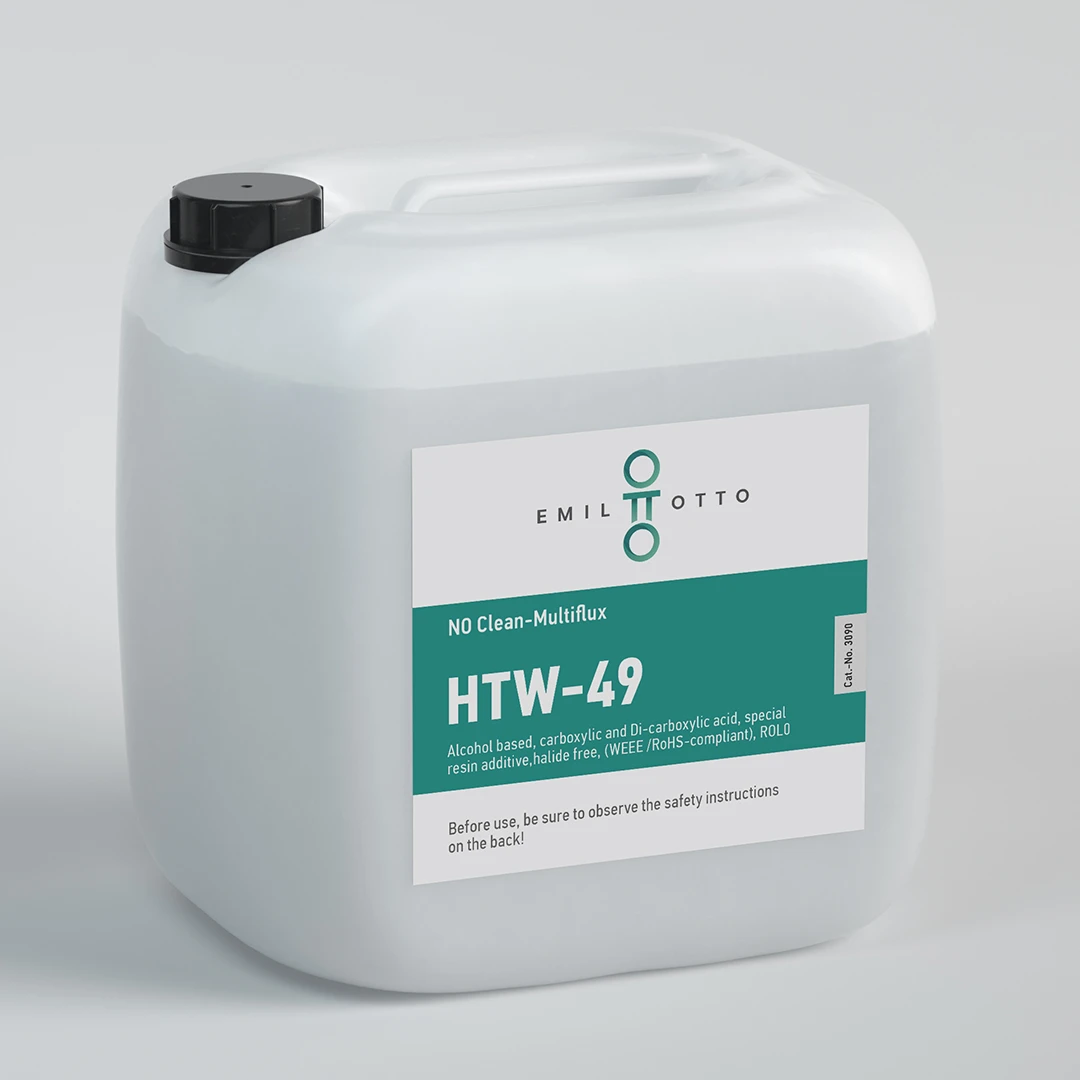The use of flux during thermode soldering removes oxide layers and impurities to enable optimal wetting of the solder. This ensures that the solder flows evenly and a stable connection is created.
‘Our HTW-48 and HTW-49 fluxes contribute significantly to the improvement of soldering quality. This is particularly important for difficult materials such as uncoated copper wires or lead-free solder joints, since these are more susceptible to oxidation. The fluxes are offered in different packaging units. We know that many customers use semi-automatic thermode soldering processes in which the flux is applied manually. That is why we also offer the HTW-48 and HTW-49, for example, as a flux stick that makes application particularly easy.’
Markus Geßner, Marketing and Sales Manager at Emil Otto GmbH
HTW-48
Selective and manual soldering, dip tinning, strand tinning
No Clean-Flux with halide-free activators (WEEE /RoHS compliant)
Type ISO-9454: 1131 DIN EN 61190-1-1 (acc. to J-STD 004) ROL0
HTW-49
Selective and manual soldering, dip tinning, strand tinning
No Clean-Flux with halide-free activators (WEEE /RoHS-compliant)
Type ISO-9454: 1131 (1.1.3.A) DIN-EN 61190-1-1 (acc. J-STD-004): ROL0
Especially for selective soldering processes and cable assembly
The fluxes HTW-48 and HTW-49 contain halide-free activators and were specifically developed for selective soldering processes and cable assembly, in particular for strand tinning. In HTW-48, the activators consist of (di-)carboxylic acids. HTW-49, on the other hand, was formulated with the activators rosin, carboxylic acids and (di-)carboxylic acid complex with a special resin additive.
Suitable as flux gels for repair work on printed circuit boards
‘Our flux gels are used for repair work on printed circuit boards. Both fluxes are also available as gels for rework. In the past, it was often necessary to use fluxes for manual and repair soldering that use different activators. By using uniform activators in our flux gels, cross-reactions that can occur when using different activators from different products are avoided.’
Markus Geßner
The new flux gels are based on the activator formulation of the HTW-48 and -49 fluxes and are characterized by very good wetting and spreading properties. Due to the highly concentrated formulation, they should be applied sparingly. They are dispensed using a metal dispensing needle that allows for precise positioning of the flux. Both flux gels are classified as ROL0 according to DIN EN 61190-1-1 (J-STD-004) and meet the WEEE and RoHS requirements.
Another flux that can be used for bar or thermode soldering is the HR/D-110, which has been on the market for a long time. The flux HR/D-110 is a proven Emil Otto flux for selective soldering and also achieves very good results in terms of through-hole and wetting during thermode soldering. The residue behavior is very good.



